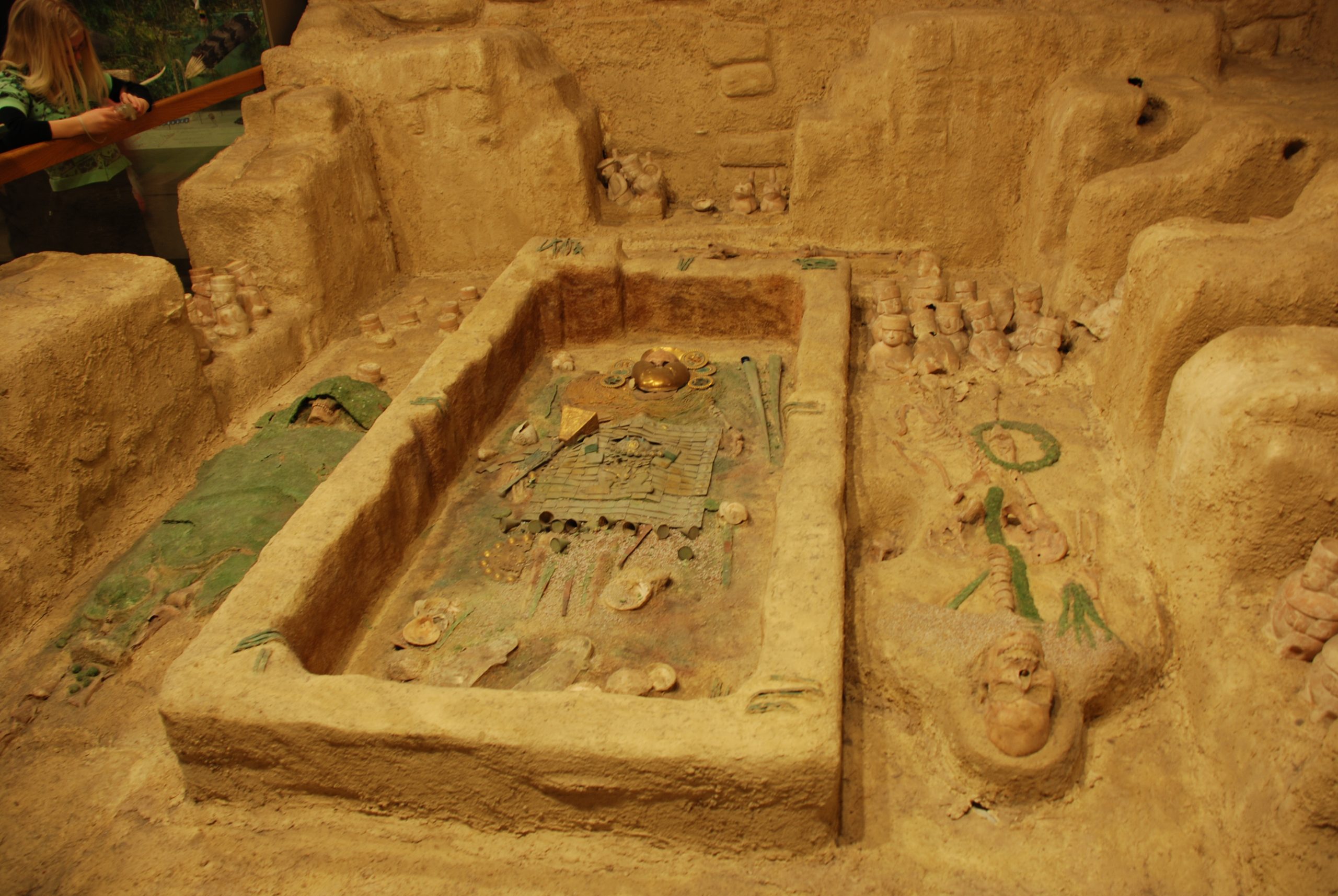The Royal Tombs of Sipan are a series of pre-Columbian tombs belonging to the Moche civilization. Discovered in 1987 near the town of Sipán in Peru, these tombs are among the most significant archaeological finds in the region. They provide invaluable insights into the Moche culture, which flourished from about 100 to 700 AD. The tombs contained a wealth of artifacts, including gold and silver jewelry, ceramics, and human remains, which have helped scholars understand the social hierarchy, religious practices, and artistry of the Moche people.
Get your dose of History via Email
Historical Background of the Royal Tombs Of Sipan
The Royal Tombs of Sipan were unearthed by a team led by Peruvian archaeologist Walter Alva. The discovery occurred in 1987 after reports of looting in the area. Alva’s team found an undisturbed tomb, which was later identified as the resting place of the “Lord of Sipan,” a high-ranking Moche warrior-priest. The Moche civilization, known for its sophisticated pottery, intricate gold work, and monumental adobe structures, built these tombs. The site has since revealed multiple tombs, indicating a complex of elite burials.
The Moche constructed the tombs with layers of adobe bricks. They placed the elite individuals in these tombs, surrounded by a wealth of grave goods. These goods included ceremonial items, jewelry, and offerings, which suggest a belief in an afterlife where such items were necessary. The tombs’ occupants, such as the Lord of Sipan, were likely key figures in Moche society, possibly rulers or high priests who wielded both secular and religious power.
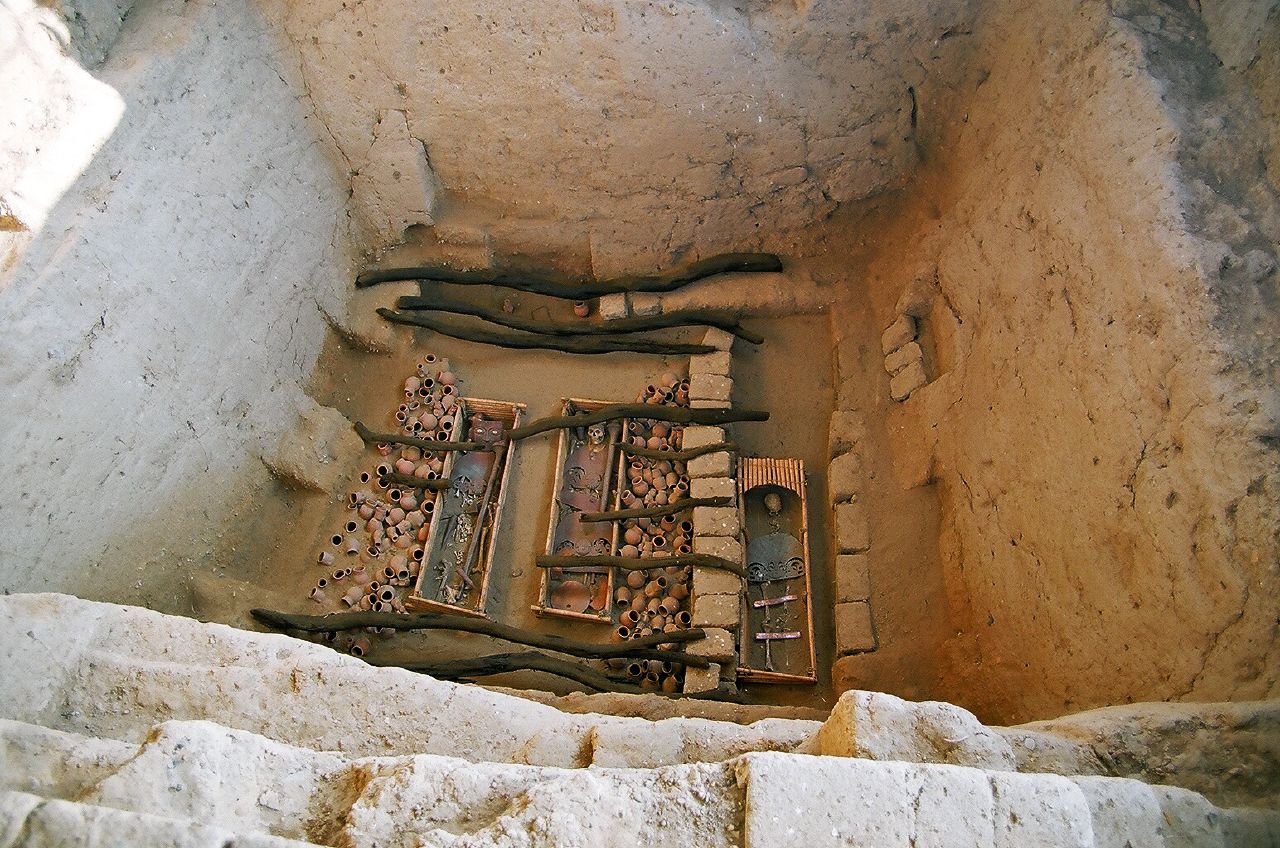
After the fall of the Moche civilization, the site remained untouched for centuries. It escaped the attention of grave robbers and archaeologists until the late 20th century. The discovery of the tombs was a watershed moment for Peruvian archaeology. It provided a rare glimpse into the Moche’s complex social structure and funerary practices. The site has not been the scene of other historically significant events, but its discovery has significantly impacted our understanding of pre-Columbian cultures in South America.
The Royal Tombs of Sipan have since become a focal point for studies on the Moche civilization. The artifacts and remains found within have been meticulously analyzed to reconstruct Moche life. The tombs themselves have been preserved and are now part of the Royal Tombs of Sipan Museum. This museum allows visitors to explore the Moche legacy and view the artifacts in a context that reflects their original placement within the tombs.
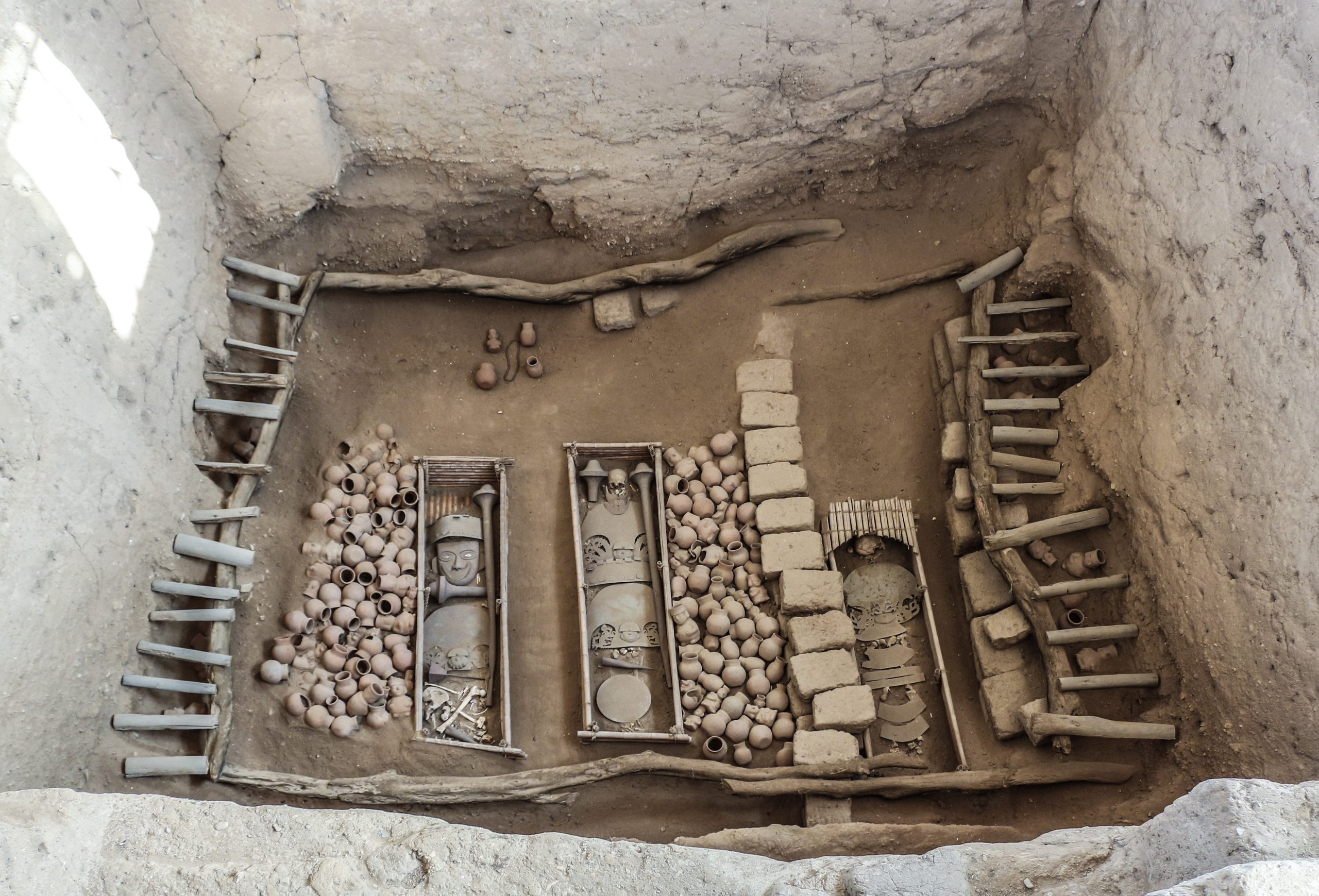
The discovery and subsequent study of the Royal Tombs of Sipan have provided an unparalleled window into the Moche world. The work of Walter Alva and his team has been instrumental in preserving the site. Their efforts have ensured that the tombs continue to educate and fascinate those interested in the rich tapestry of human history.
About the Royal Tombs Of Sipan
The Royal Tombs of Sipan are a testament to the Moche’s engineering and artistic skills. The main tomb, belonging to the Lord of Sipan, was a multilayered structure. It consisted of a wooden burial chamber at its core. This chamber was encased in adobe bricks and covered by a layer of gravel. The construction methods ensured the preservation of the contents for over a millennium.
The burial chamber of the Lord of Sipan was richly adorned. It contained precious metals, semi-precious stones, and exquisite pottery. The gold and silver artifacts demonstrate the advanced metalworking techniques of the Moche. They crafted intricate headdresses, ear ornaments, and necklaces, all of which signified the high status of the tomb’s occupant.
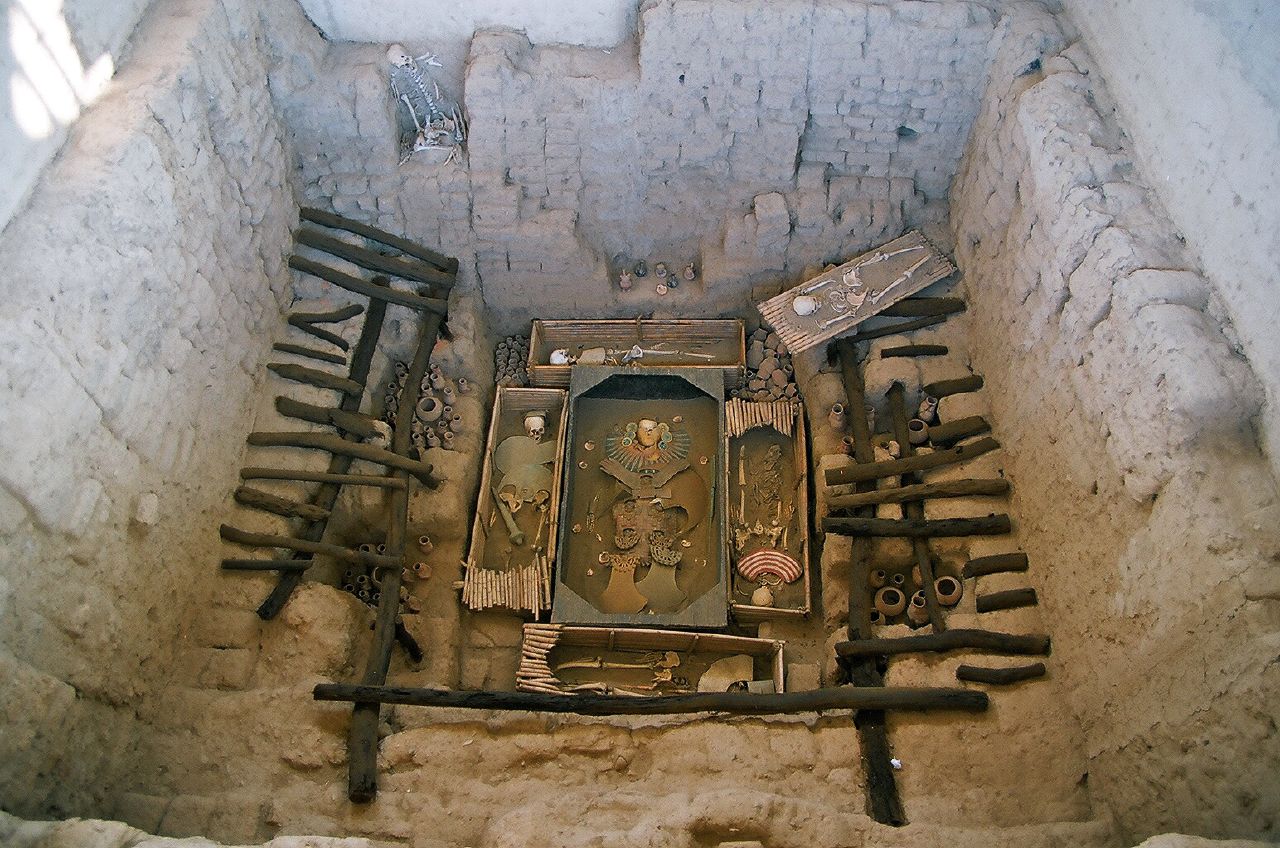
Beyond the main tomb, several other burials were discovered at the site. These included the tombs of individuals who were likely close associates or relatives of the Lord of Sipan. The presence of these additional tombs indicates a hierarchical society with elaborate burial customs for the elite. Each tomb contained a unique array of goods, reflecting the status and roles of the individuals within Moche society.
The architectural highlights of the site extend beyond the tombs themselves. The surrounding area features the remains of pyramids, plazas, and other structures that were part of the Moche ceremonial center. These structures were made from adobe bricks and decorated with murals and friezes, some of which have survived to the present day.
The Royal Tombs of Sipan provide a vivid picture of the Moche’s burial practices and beliefs regarding the afterlife. The careful construction of the tombs and the selection of grave goods reflect a culture that placed great importance on the journey to the next world. The site remains a key source of information on the Moche and continues to inspire awe with its artistic and architectural legacy.
Theories and Interpretations
Several theories have emerged regarding the use and significance of the Royal Tombs of Sipan. The most widely accepted view is that the tombs served as the final resting place for Moche elite. This is supported by the richness of the artifacts and the elaborate nature of the burials. The presence of human sacrifices in the tombs suggests that the Moche believed in an afterlife where the deceased would need attendants.
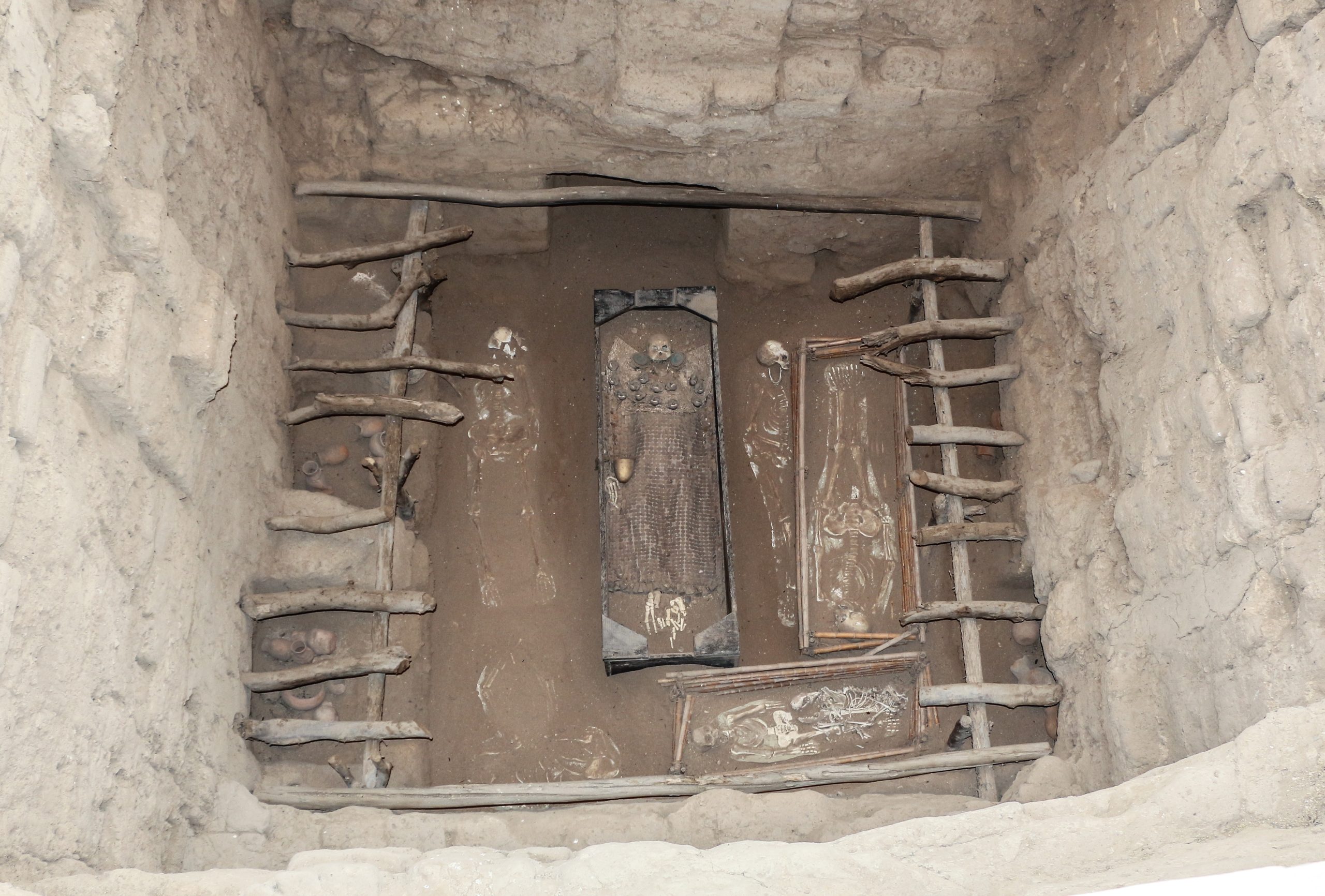
Some mysteries surround the tombs, particularly regarding the identities of the individuals buried there. While the Lord of Sipan is the most famous occupant, the identities of the others remain speculative. Researchers have used the artifacts and skeletal remains to piece together possible roles and relationships, but much is still unknown.
The interpretations of the artifacts have required careful matching to historical records and Moche iconography. The iconography depicted on pottery and murals has been crucial in understanding the symbolism of the artifacts. For example, certain motifs on the jewelry have been linked to Moche deities and religious beliefs.
Dating of the tombs and their contents has been carried out using various methods. Radiocarbon dating has been particularly useful in establishing a timeline for the construction and use of the tombs. This has allowed researchers to place the tombs within the broader context of Moche civilization and its development.
The ongoing analysis of the Royal Tombs of Sipan continues to yield new insights. As techniques improve and more data is gathered, our understanding of the Moche and their practices becomes more nuanced. The site remains a focal point for research into pre-Columbian cultures and their interactions with the environment and each other.
At a glance
Country: Peru
Civilization: Moche Culture
Age: Approximately 1,700 years old (3rd century AD)

